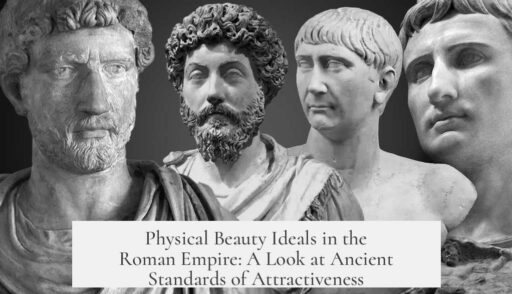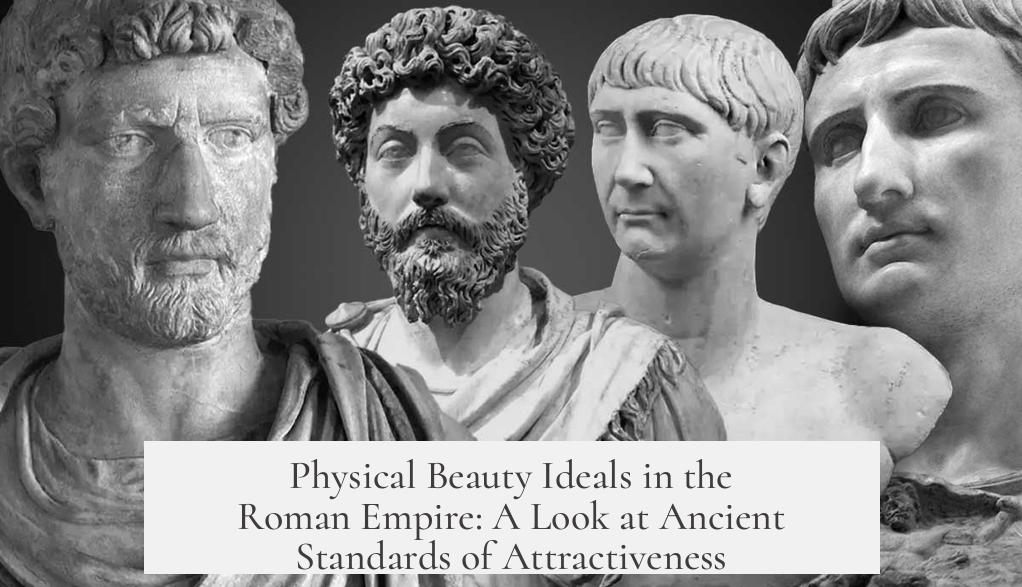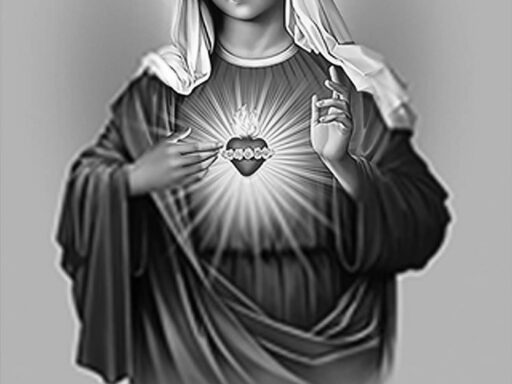Physically attractive traits in the Roman Empire involved a blend of specific facial features, body types, and cultural ideals reflecting strength, proportion, and refinement. Roman beauty standards mirrored some modern ones but carried unique cultural nuances emphasizing harmony in appearance and character. Both males and females had distinct ideals, often popularized through art and literature.
For men, attractiveness centered on a slim, athletic body with sharply defined muscles. This ideal derived from Greek classical sculpture, celebrating a physique that combined strength and endurance. A tall, muscular build signified the Roman ideal of a warrior’s lifestyle, reflecting both physical fitness and social standing. Roman art intentionally balanced muscle definition with proportion and line, viewing extreme muscularity as less desirable than a harmonious form.
Women’s beauty was generally portrayed as curvy and lush, featuring full hips and smaller yet firm breasts. Roman female statues, such as those depicting Venus or Aphrodite, illustrate this preference. Pale skin was highly valued by Roman women during the Augustan era, often enhanced with cosmetics to achieve a smooth, white complexion with rosy cheeks. Still, some regional diversity appeared, as frescoes from Pompeii showed women with lightly tanned skin, dark hair, and eyes. Romans used “kohl” to outline eyes, creating a natural yet striking look influenced by Egyptian traditions.
Roman poet Catullus offers a notable glimpse of late Republican female ideals. He cited traits such as a small nose, pretty feet, a dry mouth (avoiding wet kisses), and long, slender fingers and toes. Apart from physical traits, a well-spoken manner was considered attractive, highlighting the cultural importance of inner qualities alongside appearance. This points to a broader Roman appreciation of personality and social refinement as components of beauty.
- Facial Features: Romans favored large eyes, long straight noses, and plump curved lips. Wavy hair was usually styled in tight curls or ringlets to enhance charm.
- Complexion and Cosmetics: Pale complexion was ideal, especially for women. They used powders and cosmetics to disguise imperfections like thin legs or flat chests, enhancing perceived attractiveness.
- Male and Female Body Ideals: Men were depicted slim, athletic, and muscular; women, lush with full hips and smaller breasts.
- Strength and Beauty: Roman statues and sculptures show a combination of beauty and strength was prized. Physical training was essential to develop and maintain the ideal male form.
- Cultural Diversity: Rome housed diverse peoples with different hair and eye colors, from blond and blue-eyed to brown-haired and dark-eyed, influencing varying standards.
Romans did not focus exclusively on exterior traits. They valued harmony between physical strength and beauty, especially in men. The melding of athleticism and proportion reflected ideals of both health and aesthetic appeal. Women, meanwhile, balanced their sensual curves with modesty and refinement.
The ideal female body defied extremes and emphasized proportion, reflecting fertility and grace. Roman artworks confirm these preferences, showing women with broader hips and smaller breasts, aligning with notions of youth and vitality. Additionally, various parts of the body like fingers, toes, and feet attracted attention for their elegance and perceived beauty, underscoring Romans’ appreciation of detail.
Complexity characterizes Roman beauty standards. The society embraced diverse appearances due to its multicultural demographic. Figures such as Augustus and Cicero illustrated this variety through their differing hair and eye colors. More importantly, inner qualities like eloquence and grace complemented physical attractiveness.
Romantic poets and artists helped shape and express ideals popular among the elite. Notions about physical beauty intertwined with social status and cultural expectations. This is evident in attitudes toward cosmetics and body care, which aimed not just to mask flaws but to enhance socially desirable traits.
| Aspect | Male Ideal | Female Ideal |
|---|---|---|
| Body Type | Slim, athletic, muscular | Curvy, lush, full hips, smaller firm breasts |
| Facial Features | Large eyes, long straight nose, plump lips | Small nose, large eyes, plump lips, rosy cheeks |
| Complexion | Varied; less focus on pale skin | Pale complexion, use of cosmetics |
| Hair | Wavy hair styled conservatively | Wavy hair in curls or ringlets |
| Additional Traits | Strength combined with beauty, tall | Pretty feet, slender fingers/toes, refined speech |
- Large eyes, straight noses, and plump lips defined facial beauty.
- Male attractiveness linked to muscular, athletic build.
- Women favored pale skin and curvy bodies with specific attention to detail.
- Inner beauty and social refinement mattered alongside appearance.
- Cosmetics played a role in enhancing or disguising certain traits.




